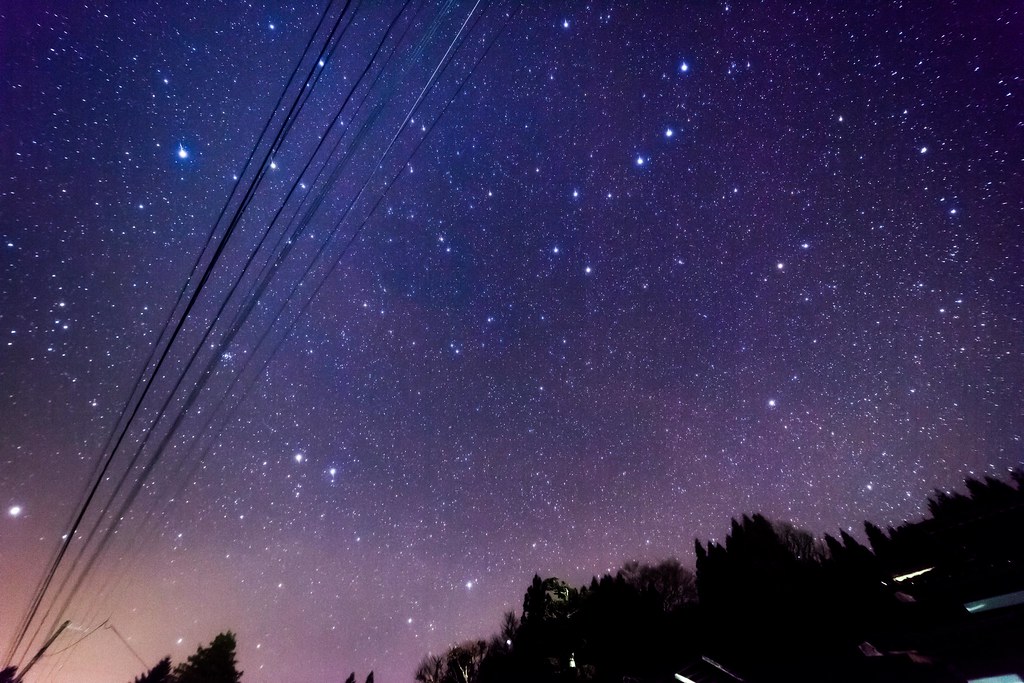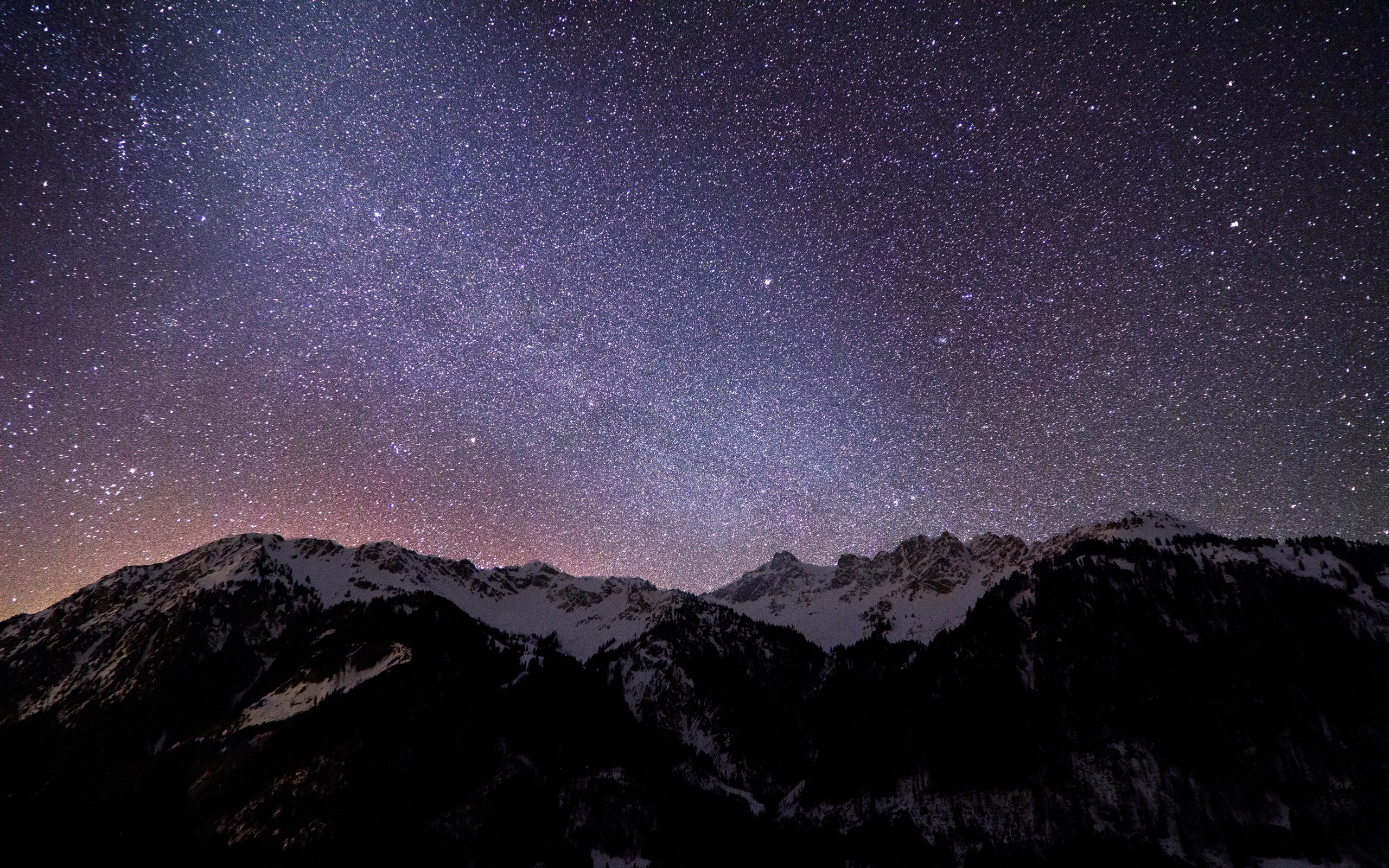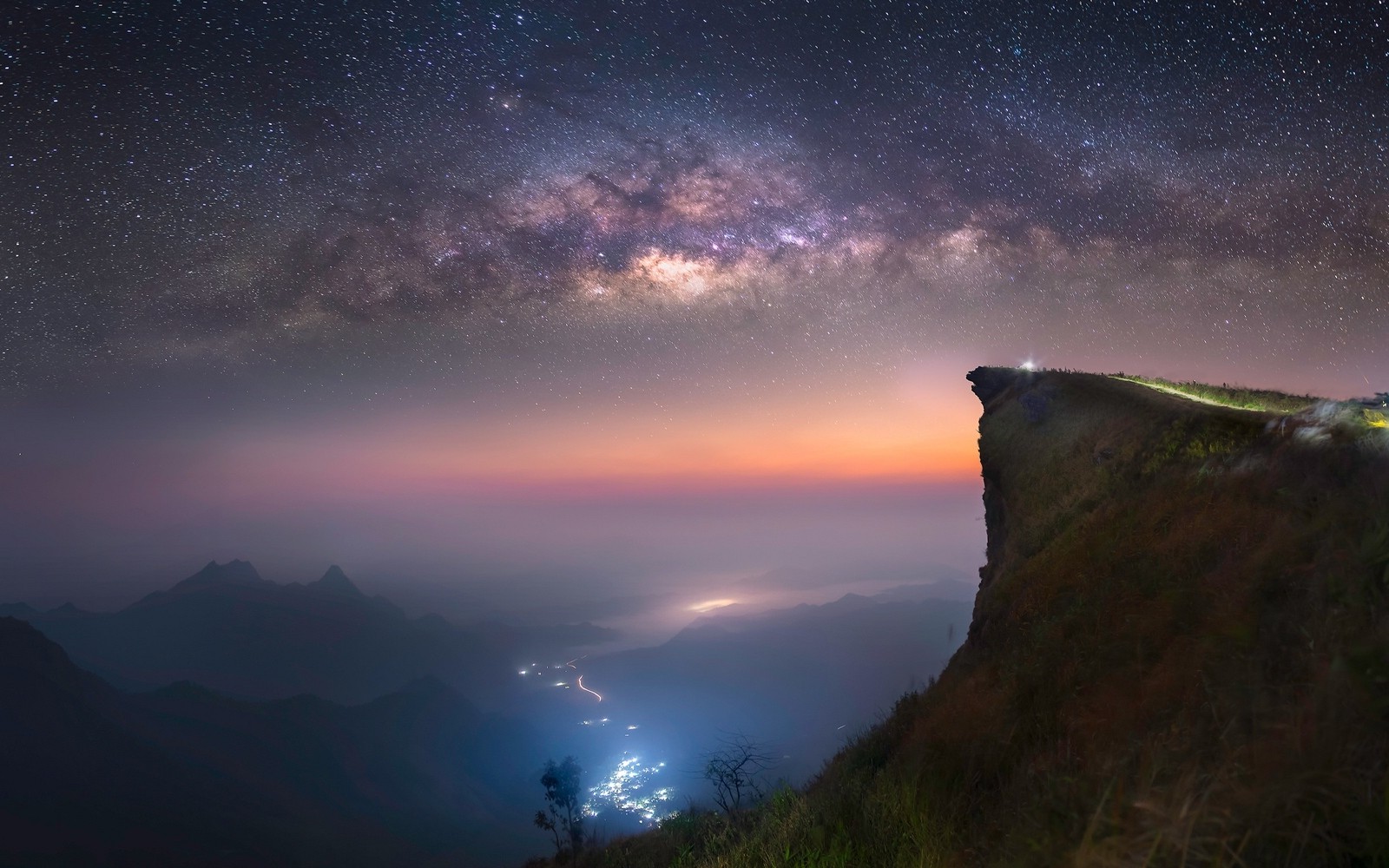- Starry Landscape Stacker For Mac
- Starry Landscape Stacker Mac Crack
- Starry Landscape Stacker Alternative Mac
- Starry Landscape Stacker Mac Review
- Starry Landscape Stacker Mac Free Download
- Starry Landscape Stacker Mac Free Trial
- Starry Landscape Stacker Mac Free
Mac: Starry Landscape Stacker Starry Landscape Stacker on macOS Starry Landscape Stacker is the program I use, it is incredibly good at automatically finding the stars to make a mask for the sky, so that the foreground is not included in the alignment process. There is a program called Starry Landscape Stacker for Mac computers that I have heard excellent reviews of from other astrophotographers. The problem for me and many others is that it is not available for Windows operating systems. As a result, I have been on the hunt for years to find a piece of software that can do what Starry Landscape. The 1.0 version of Starry Landscape Stacker for Mac is provided as a free download on our website. The actual developer of this software for Mac is Ralph D. The most popular version among the application users is 1.0. This program was developed to work on Mac OS X 10.7 or later. Star stacking with raw files in Starry Landscape Stacker (Mac) and Sequator (Windows). Preparing the stacked image and separate foreground exposures for blending in Lightroom Classic. Using Capture One (optional) for easily removing most hot pixels, allowing you to skip in-camera long exposure noise reduction! Focus stacking in Photoshop. Starry Landscape Stacker is a Mac app for making images of the night sky with stars as points and low-noise. It uses 'stacking' or 'image averaging' to combine a group of images that were captured in rapid succession with identical exposure settings and the camera in a fixed position.
20 images of Joshua trees stacked with Sequator
For quite some time astrophotographers have used a program called Deep Sky Stacker to align and combine multiple starry images and create a better result. Landscapes present a particular challenge, aligning the stars as they move through the sky would blur the landscape portion of the image. So programs have been created to stack the starry sky while masking and preserving the static landscape.
On a Mac, there’s Starry Landscape Stacker. On a PC, there’s Sequator. I recently built a fast Windows PC, so I downloaded Sequator to see how it performed. We capture star trails sequences of the Methodist Church on most of our workshops in Bodie, so that was a natural subject to start with.
Next I had to try something a little more interesting, like a Milky Way reflection. I noticed that the program has an HDR setting, so I pointed it at three bracketed Milky Way shots taken one stop apart in exposure.
It turned out really well for a first pass. I had to process the reflection and the sky separately, since the stars move in different ways in each, then merge the results.
Then I tried stacking 20 files from a single-exposure star trails or time-lapse sequence, shot later that night at a different focal length:
Not all of my star reflection shots worked. My sense is that you need enough stars to make the alignment work, and the physics is such that you don’t always get enough reflected stars to pull that off.
Obviously I’ll gain experience and be able to fine tune the process and results, but the initial results are very encouraging. Some of these were time-lapse or star trails sequences that I re-processed to produce a single image result for the first time. Others were two or three adjacent shots. How many images are needed at a minimum? How many optimum? Are different exposures needed for the foreground landscape? How many and at what settings? Should we shoot an HDR bracket, a sequence of images, or both: multiple HDR brackets?
The goal will be to get better results without too much impact on valuable night shooting time. I already have some ideas on how we might adjust our nighttime shooting practices, especially for those precious hours we have when we get permits to shoot at night in Bodie.
Starry Landscape Stacker For Mac
Since I originally wrote this post we’ve had a few night photography workshops in Bodie (see link above for info). That has given us the opportunity to test and develop lighting methods. We’ll be adapting our shooting and post-processing approach to still allow single image results while also accommodating a new workflow for people who want better, lower noise results.
I’m also trying faster lenses and various sensors, the Nikkor 20mm f/1.8 on the Nikon D850, Canon EF 24mm f/1.4 on the Canon EOS 5D Mark IV, and so on. I’m looking forward to bringing more photographers out there this summer (schedule). We also shoot the High Sierra in Yosemite along Tioga Pass Road:
We will also test various techniques for desert locations that often involve more heat and sensor noise during Milky Way season, such as the California desert and high desert locations in Nevada:
Our newest edits are looking best, so we’re gradually learning what we can pull off with the new workflow, from image capture to post-processing. We’re incorporating this into our shooting and post-processing flow for our workshops. We also hope to add Zoom calls soon to demonstrate and discuss what we’ve learned. Contact us to receive details when we’re ready to launch.
Last Updated: 23rd October 2015
A common approach to astrophotography has become the use of Digital SLR cameras (DSLR). These are relatively cheap, can be used for astronomy and ordinary terrestrial photography, and produce surprisingly good astronomy images so have become quite popular.
Starry Landscape Stacker Mac Crack
There’s a few basic steps required for getting started in DSLR astrophotography. I would summarise them as:
1. Buy a camera
2. Buy a tripod, telescope or other tracking platform
3. Acquire a piece of software to help take long exposure photographs
4. Acquire a piece of software to process (including stack) the photographs you take.
The question often arises from the above of what piece of software to use for stacking and processing the resulting images that you take using your camera. Or, also often the case, people don’t realise that there is software available to make this easy. So here I am going to list a few options, hopefully making it easier for anyone who finds this page.

If you know of programs which are suitable for DSLR astrophotography image processing that are not on this list please let me know, also let me know if information here needs updating. Thank you.
Software suitable for stacking and/or processing astrophotography DSLR images:
Deep Sky Stacker
This is a free and very capable piece of software for aligning, combining and performing post processing of astrophotographs from digital SLR cameras. The best thing about this software is that it’s free, and amazingly capable for something that is free.
This software will read a wide variety of file formats including Canon RAW format, and process them. I have had some issues with processing canon RAW files with respect to getting good colour balance post-stacking so often choose to first convert the RAW files to TIF before processing. This may simply be a lack of experience on my part, as I do not use this software often.
The registering capabilities of Deep Sky Stacker are very good but do not match the capabilities of RegiStar or PixInsight when it comes to getting a good alignment of frames. There are often cases I find DSS will not correctly align frames where as RegiStar and PixInsight will.
I don’t tend to like the post-processing capabilities of Deep Sky Stacker so tend to finish my use of DSS at the point it has stacked the “Autosave.tif” and take that file in to PhotoShop from there to perform post-processing.
Deep Sky Stacker’s biggest advantage is probably it’s ease of use (very intuitive and easy to use interface) and it’s flexibility with it supporting all major file formats and handling various scenarios covering most astrophotography needs.
Find Deep Sky Stacker here: http://deepskystacker.free.fr/english/index.html
Starry Landscape Stacker
This is an Apple/Mac program and a great option for those who do not use Windows. It is effectively a good alternative to Deep Sky Stacker for those who use Apple PC’s.
Find Starry Landscape Stacker here: https://itunes.apple.com/au/app/starry-landscape-stacker/id550326617?mt=12
PixInsight
PixInsight is an advanced astrophotography image processing piece of software. I now have some experience using PixInsight for processing CCD images from an SBIG ST8-XME camera and RAW CR2 files from a Canon 6D DSLR and can certainly see the potential of the software.
If you ant a one-stop-shop for astrophotography image processing and you are happy to spend the $250 on PixInsight, there’s a very good chance you need none of the other pieces of software listed on this page. Having said that, you will be up for a steep learning curve.
PixInsight operates in a very different way to other software. They even seem to put buttons on dialogue boxes around the opposite way to what is most common just to confuse the user. The difference in how processing is done and the user interface in PixInsight makes the learning curve very steep and troubling at first. There are video tutorials online which are almost essential for getting an understanding of how to use the software before you lose your hair trying, but once concerned it is proving to be very powerful. It took me a few attempts coming back to PixInsight over a few months before I became familiar enough with it and stopped hitting brick walls to be able to process FIT and DSLR images with some confidence.
Functions such as applying a LinearFit across LRGB frames, and the Dynamic Background Extraction function on any image to flatten image backgrounds are particularly useful and relatively easy to use once you understand the basics of the PixInsight user interface.
Where other processing software has failed to produce a good result of DSLR images (software such as using DSS, RegiStar and Photoshop) PixInsight has excelled and brought out more detail in images than I realised existed in the raw data.
There is no doubt to my knowledge that PixInsight is the most advanced piece of software for stacking astrophotography deep sky images. It’s set of processes and plugins is both extensive and powerful. The catch is only in it’s usability and how patient you must be to work through its steep learning curve to achieve good results.
I would suggest if you are going to use PixInsight, start with DSS and understand the basics of astrophotography image processing before you begin the daunting process of understanding how to use PixInsight. Also, if you have easy to align good quality images then you will likely get a very good result from DSS in a much quicker time frame than PixInsight which will require you to perform more steps.
If you want to process DSLR images with PixInsight you will need a beefy machine to run it on. It will easily consume all of my 16 gigabytes of RAM on my Core i7 64bit windows machine when processing a stack of 20 DSLR images. Programs such as RegiStar work in a significantly smaller footprint.

PixInsight is available as 45 day free trial.
Find PixInsight here: http://www.pixinsight.com/
StarStaX

StarStaX is a multi-platform image stacking software. From their website: https://www.markus-enzweiler.de/StarStaX/StarStaX.html
StarStaX is a fast multi-platform image stacking and blending software, which allows to merge a series of photos into a single image using different blending modes. It is developed primarily for
Starry Landscape Stacker Alternative Mac
Star Trail Photography where the relative motion of the stars in consecutive images creates structures looking like star trails. Besides star trails, it can be of great use in more general image blending tasks, such as noise reduction or synthetic exposure enlargement.
Starry Landscape Stacker Mac Review

StarStaX has advanced features such as interactive gap-filling and can create an image sequence of the blending process which can easily be converted into great looking time-lapse videos.
StarStaX is currently under development. The current version 0.70 was released on December 16, 2014. StarStaX is available as a free download for Mac OS X, Windows and Linux.
Find StarStaX here: https://www.markus-enzweiler.de/StarStaX/StarStaX.html
CCDStack
CCDStack is one of a suit of products made by CCDWare aligned to advanced usage of telescopes.
I have used CCDStack a reasonable amount now for processing images from my ST8-XME astronomy camera and find it very usable and relatively powerful. I like features such as being able to see what data is being rejected by a sigma function on light frames and doing this very quickly and easily compared to PixInsight which shows you no preview before processing the full stack. This makes it very easy to tweak stacking parameters for a good result and apply different filtering to individual frames (such as when a satellite passes through a frame, applying harsher exclusion to that frame).
Starry Landscape Stacker Mac Free Download
CCDStack will easily in only a handful of steps register your frames, normalise (apply weighting to) frames, apply data rejection to frames and combine frames in to a stack using weighting determined by the normalisation.
I found CCDStack to be a good and logical step up from CCDSoft. It is usable and has intuitive and useful functionality. The program seems relatively light weight also, working efficiently with a large number of files.
I have not tried CCDStack for DSLR images. It does apparently open CR2 RAW files (amongst other formats) however in my quick attempt it did not open CR2 files from my Canon 6D (I’m unsure why).
Find CCDStacker here: http://www.ccdware.com/products/ccdstack/
Astro Pixel Processor
Astro Pixel Processor is a complete image processing software package: https://www.astropixelprocessor.com/
TBA on details – I’m still testing this one!
Maxim
I primarily use MaximDL for image reduction, as it’s image reduction process is very painless. Provide it with a directory of all your reduction .FIT files and it will nicely sort them in to a database of reduction groups to be applied to any image you open. Open the .FIT needing to be calibrated/reduced and it will apply the appropriate reduction frames without you choosing reduction files of the correct temperature, binning, etc. This is significantly easier than any of the other packages which all require you to do more manual work with reduction frames. The benefits of MaximDL’s reduction frame handling for .FIT files may or may not be transferred to use of DSLR raw files – I have not tried reduction of DSLR images in Maxim.
MaximDL’ stacking seems fair however I haven’t had need to use it for alignment and stacking. I also haven’t tried MaximDL for large images such as DSLR, with the largest I typically use in Maxim being those from my SBIG ST8-XME.
Find MaximDSLR here: http://www.cyanogen.com/products/maxdslr_main.htm
Starry Landscape Stacker Mac Free Trial
RegiStar
This is a fantastic piece of software for aligning and combining individual astrophotographs from digital SLR cameras. It works very efficiently with large files, is amazingly capable in aligning photographs and has quite good stacking algorithms built in as a bonus.
This software is primarily intended for simply the registering (aligning) of frames such that they can be combined. This piece of software is so good that you can combine old film images with new digital images, or digital images from different cameras with different focal lengths and all sorts. It will also easily handles field rotation (fixed tripod shots are OK) and pretty much any other distortion.
The problems I have with this software is that it does not read Canon RAW files, so conversion to some other format such as TIF is required first, that it does not handle reduction of the images which leaves you needing another piece of software (like PhotoShop) to do that manually first, and that when combining frames in to a stack it does not provide any weighting of frames or sigma exclusion of noise in frames leaving this piece of software primarily useful for registering frames and saving those registered frames, not stacking them.
RegiStar’s excellence at registering frames comes with a price, and in this case that’s about US$159.
The version of RegiStar that I am familiar with is 1.0, and it hasn’t been updated for some time (2004). This means it’s not up to date with current file types (RAW) but doesn’t detract from it’s excellent ability to align TIF images. Increasingly, as time ticks on and no further updates are published, you would be wise considering an alternative piece of software which is updated more regularly, such as PixInsight.
Find RegiStar here: http://www.aurigaimaging.com/
ImagePlus
I cannot say much about ImagePlus as I have not used it for DSLR image processing. However many people do and it comes highly recommended. You can find out plenty of information about it around the web.
Starry Landscape Stacker Mac Free
Find ImagePlus here: http://www.mlunsold.com/